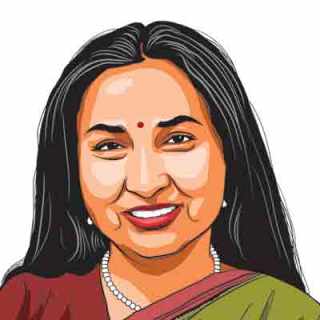Policy must tackle not just dissatisfaction of large farmers, but distress of most vulnerable
To address farmers' woes, we need a multi-pronged strategy of income support, government investment, and institutional innovations, and not a one-size-fits-all approach.

The two main policy interventions repeatedly discussed in recent months to tackle farmer distress — loan waivers and minimum support prices (MSP) — treat all farmers (large/small, male/female) alike. But farmers are heterogeneous. They differ especially by income, land owned and gender. And farmer dissatisfaction is not the same as farmer distress. Better-off farmers are dissatisfied but politically vocal; poor farmers are distressed and many kill themselves in silence. It is the truly distressed we need to reach, but our policies only address the dissatisfied.
First, take loan waivers. Today, most economists agree that waivers are a bad idea: They deplete state finances, undermine bank culture, and barely reach 20-25 per cent farmers who have access to institutional credit, but not the marginal farmers or labourers who depend on moneylenders, or get no credit at all. Having a bank debt is not, in itself, a sign of distress. Farming, like other businesses, needs loans, and access to formal credit signifies credit worthiness. It is the marginal and small farmers who depend mainly on private lenders, and whose loans don’t get waived, who are in distress.
Second, raising MSPs will help surplus producing farmers, but not net buyers of farm produce — marginal farmers, farm labourers and urban consumers. A 2015 IIM-A report on Marketed and Marketable Surplus found that marginal farmers (up to one hectare land) contributed only 5 per cent of marketed surplus rice and 4 per cent of wheat, even in the major rice and wheat surplus states. And they sold only 39 per cent and 25 per cent of their marketed rice and wheat to government agencies, compared with the 70 per cent and 90 per cent sold by large farmers. Further, the Shanta Kumar Committee reports that only 6 per cent of farmers gained from selling these crops to any procurement agency.
Third, the policy of direct transfers to farmers also ignores the inequality between farmers. Telangana gave Rs 9,900/ha/season to all landowning farmers. Hence, the very large landowners gained — not only from owning large tracts, but in both seasons, since with irrigation they can cultivate in both kharif and rabi seasons; while pure-tenants and labourers got nothing. Nor did women farmers get anything, few of whom own land. Odisha recently announced that it will pay both farmers and labourers, but like Telangana, it will pay per household and not per person. Both states thus ignore women’s claims, and also the substantial evidence that it is income in a mother’s hands that greatly improves child nutrition and education, rather than income only in the father’s hands.
In fact, neither state has recognised intra-household inequalities, or paid heed to the large proportion of women farmers who are either principal cultivators or de-facto responsible for farms with male out-migration. Both categories are growing: Women farmers directly operating holdings, for example, grew from 12.8 per cent in 2010-11 to 13.9 per cent in 2015-16 (agricultural censuses). And in 2010, women farmers constituted 15 per cent of farmer suicides in five major states.
In NSSO’s Situation Analysis Survey, when 50,000 farmers across India were asked if they liked farming, 40 per cent said they did not. This included both better-off and poor farmers, and both men and women. As discussed in my article (‘The seeds of discontent,’ IE January 15, 2017), the better-off farmers, with more land, credit and education have high aspirations and are deeply dissatisfied, not in the least by the lack of formal sector jobs for themselves and their children. The poorer farmers are distressed given poor returns from agriculture. Women fall in both categories.






































No hay comentarios:
Publicar un comentario